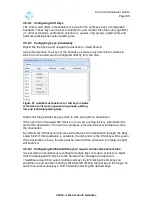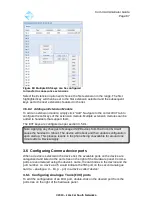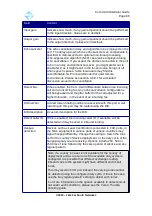
Com.X Administrator Guide
Page 73
3.5 Managed Sip phone provisioning
SIP handsets can be configured and manipulated in various ways directly from the
Com.X GUI.
For each phone added to the hardware list, a corresponding .cfg file, marked as
unique to the handset with a matching MAC address, is created and stored within
/etc/commagui/autoprovision/, where each phone manufacturer and then model, is
allocated its own folder containing the .cfg files of all similar handsets. Changes
made on the GUI are reflected in these files, which are requested by their
corresponding handsets on start up.
A configuration backup of the system will back up these files to the backup archive.
Should an archive be restored, in which configuration files are present, they will be
restored to the correct folder within /etc/commagui/autoprovision/ after the restore
has been applied. Restoring the factory default .tar.gz archive on the Com.X unit will
result in these files being deleted and the Com.X losing all association to the phone.
Each handset will have to be re-added to the hardware panel to allow configuration of
any of the settings mentioned.
Note: If the phone connects to a network with a DHCP server other than the Com.X
present, the DHCP server should configure option 66 to refer to the Com.X when
responding to phone DHCP requests.
Much like a firewall is able to block unwanted traffic by forwarding selected ports on
the Com.X to be visible from the internet, the Com.X is able to port-forward traffic to
the handsets so that they sit behind the Com.X, but can still be safely accessible
from the internet. This allows for the installation of unconfigured phones on site, to be
configured remotely at a later stage.
Figure 69: The Com.X forwards and proxies the necessary
traffic to the handsets so that they can sit safely behind a
firewall and still be configured remotely.
This means that an array of phones can sit behind a firewall, and be configured
remotely.
©2010 –
2016
Far South Networks
















































